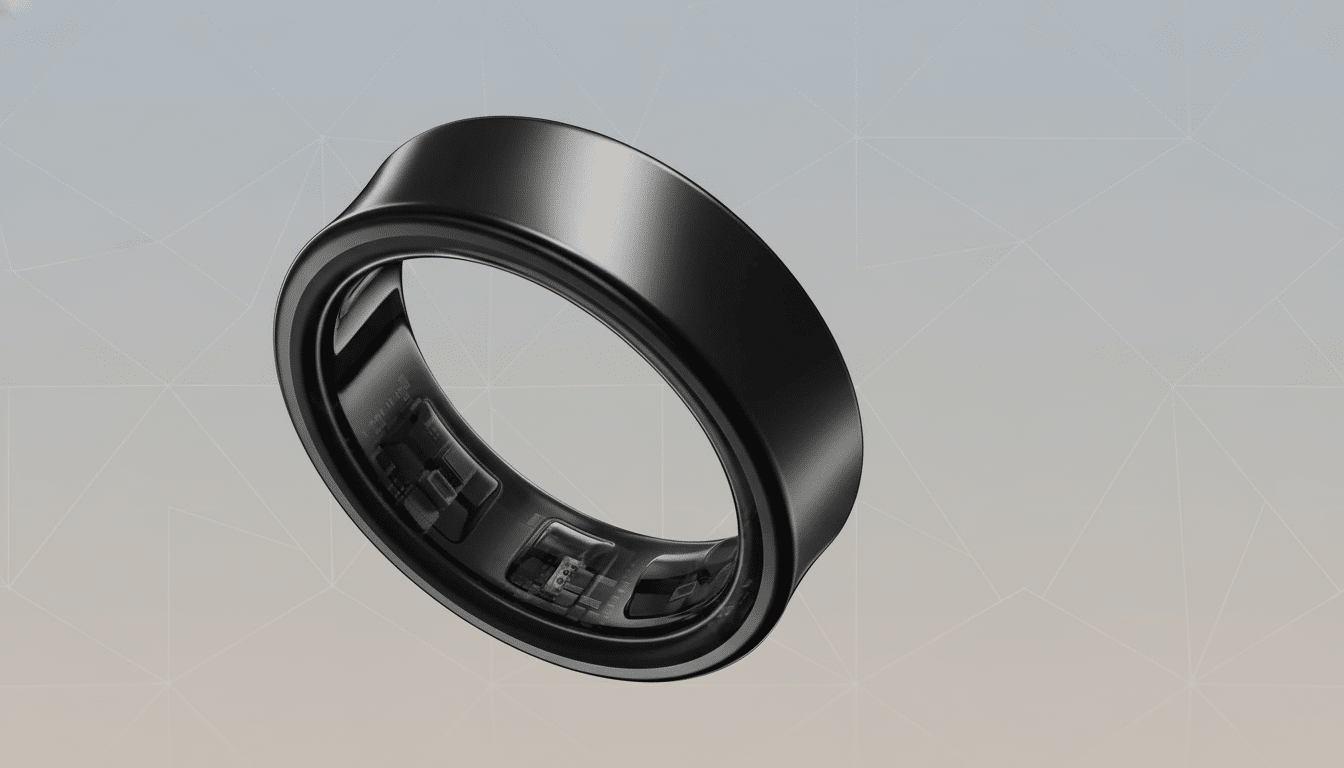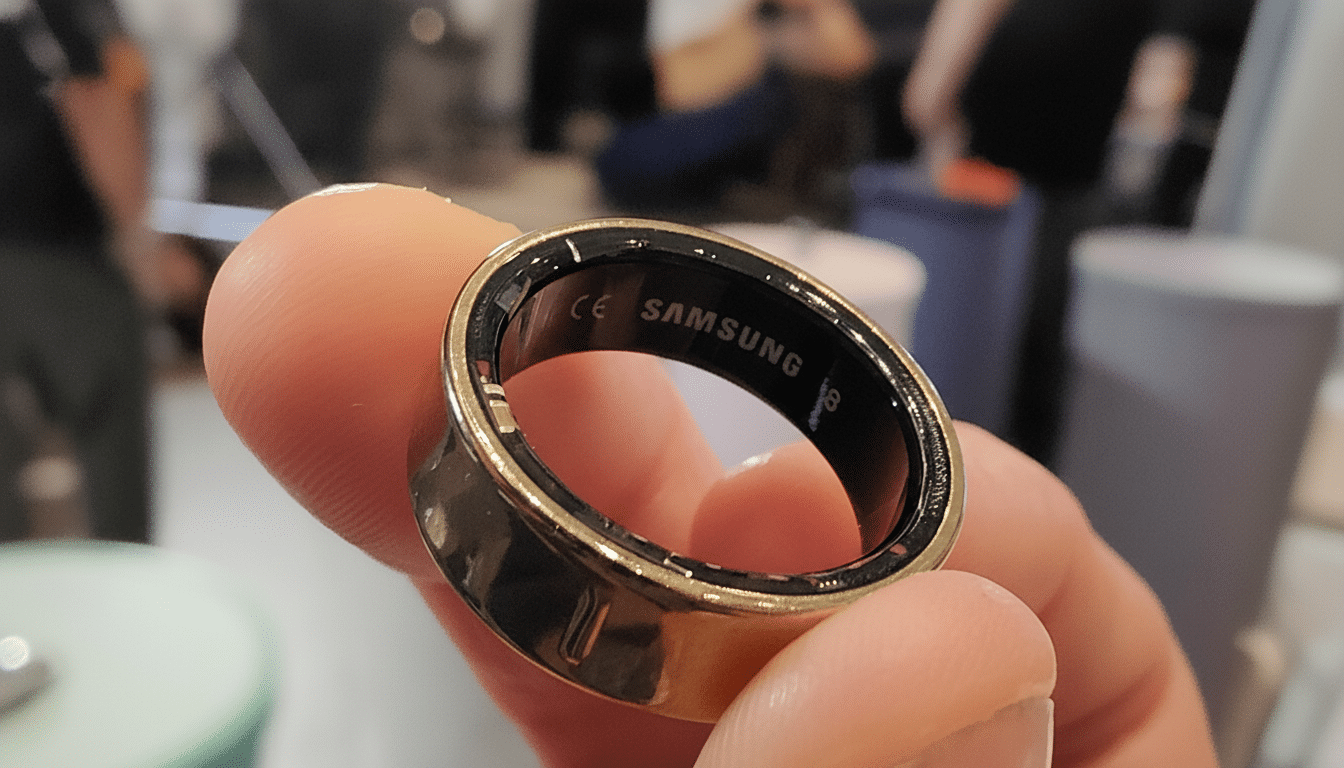A tech YouTuber alleges his Samsung Galaxy Ring battery swelled while on his finger, eventually becoming too tight for him to remove it himself, the entire ordeal ending with a medical professional extracting it. The influencer, Daniel Rotar of the ZoneofTech channel, posted photos and commentary on X detailing how the ring suddenly warped just before taking an international flight, leaving it impossible to slide off with soap and water.
Airport staff apparently denied boarding because of the broken lithium battery, which is in line with airline safety regulations. Rotar later went to the emergency room and was able to have clinicians cool the finger and lubricate it to help ease the ring off. Samsung publicly confirmed the case and said it was in touch with the user, repeating that customer safety is a top concern.

What happened and how the situation was resolved
Pictures shared by Rotar show the ring pressing against his finger, with no gap between metal and skin. Common first-aid methods — soap and water, cold compression, and elevation — were not able to produce sufficient slack. Clinicians were able to extract the Galaxy Ring without cutting through the electronics or the battery cell, which would have posed additional risks.
Other tips and advice for stuck smart rings from Samsung are standard operating procedure: cool the hand to reduce swelling, try lubrication, and hold the hand above heart level. If attempts at removal are unsuccessful or if the device seems damaged, consult a professional. For last-resort removal, the company indicates that cutting may be necessary; trained providers should use designated cut points to avoid slicing through the battery chamber.
- Cool the hand to reduce swelling.
- Try lubrication, such as soap or lotion.
- Hold the hand above heart level.
- If removal attempts fail or the device seems damaged, consult a professional.
- For last-resort removal, trained providers should use designated cut points to avoid the battery chamber.
Why even lithium batteries can bulge in tiny wearables
Most smart rings rely on lithium‑polymer pouch cells. When exposed to stress — such as heat, overcharge, deep discharge, an aging battery, or moisture penetration — the breakdown of electrolytes can produce gases that inflate the pouch. In small, metal enclosures with few places for air to vent, even slight expansion can trap the device against the finger. Standards like IEC 62133‑2 and UL 1642 stipulate safety requirements for rechargeable cells, yet, in the field, conditions can conspire to overload components beyond design specs.
Rotar noted previous battery discrepancies, such as a sudden plunge in longevity relative to early use. A sharp drop in run time, warmth while charging, or visible deformation are among the warning signs battery engineers describe prior to failure. The corrosion and stress on seals can be accelerated by salt water and high ambient temperatures — but the cause in a particular instance can only be pinned down by a manufacturer’s analysis.
Damaged batteries: travel rules and safety guidance
Airlines consider any swollen or damaged lithium battery as a hazardous substance. The Federal Aviation Administration has identified hundreds of battery-related incidents in passenger and cargo aircraft since 2006, and the agency recommends taking quick action if a personal device overheats, vents, or swells. Carriers can refuse to board a device that they determine is unsafe; and if an incident were to happen while in transit, crews are trained on how to isolate and cool the item so it does not reactivate.

For travelers, the bottom line is simple: If a wearable device shows signs of battery distress before a flight, power it down if you can and don’t stow it in checked baggage. Contact the carrier for guidance, and perhaps schedule a servicing appointment before your trip.
What owners can do if a smart ring gets stuck
If a smart ring becomes too tight during use, stop charging or wearing it, and do not attempt to pry it apart using tools. Cool the hand with water, apply a lubricating substance such as soap, and elevate the arm to minimize swelling. The “string or dental floss wrap” strategy can sometimes compress tissue softly enough that a ring will slide off, but be wary when it comes to electronics — too much pressure can damage the device or skin.
- Stop charging or wearing the ring immediately.
- Do not pry the ring apart with tools.
- Cool the hand with water and apply lubrication (e.g., soap).
- Elevate the arm to minimize swelling.
- If using the string or dental floss wrap method, proceed gently to avoid damaging the device or skin.
The American College of Emergency Physicians says emergency departments and fire services have ring-cutting tools, which can cut through jewelry safely. With electronic rings, a professional removal is particularly important to ensure that you don’t cut into a battery compartment. If you experience a significant decrease in battery life, overheating, or charging problems, discontinue use and contact the manufacturer.
What the smart ring space could gain from this incident
Smart rings from Samsung, Oura, and others are cramming sensors and radios into a tiny space, so designing for thermal protection as well as ingress is key. As adoption picks up, experts say changes can be expected in clearer labeling of emergency cut points, better moisture barriers, and “smarter” battery management to identify and quarantine faults quickly. Consumer safety agencies like the US Consumer Product Safety Commission have continuously issued warnings about battery hazards of all kinds, and wearables are no exception.
Such episodes are rare, but instructive. They emphasize the need to watch for early warning signs of battery trouble, follow airline rules when traveling, and get medical help promptly if jewelry won’t budge. For designers, it’s a reminder that the single most sophisticated ring design still must account for worst‑case scenarios — and make safe outcomes easy for the wearer.

